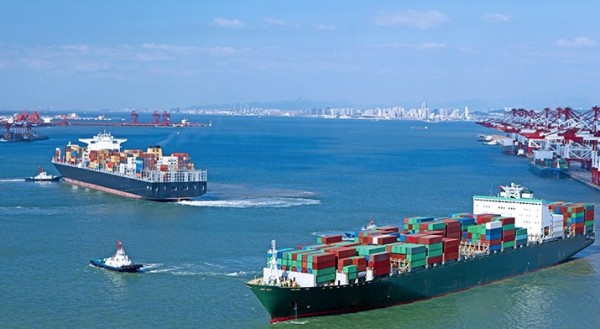Following a statement on COSCO’s and SIPG’s acquisition of the Hong Kong-based Orient Overseas International Ltd. (OOIL), BIMCO estimates that this step “brings container industry one step closer to liner paradise”. Based on existing fleet and orderbooks, the combined COSCO-OOCL entity would become the world’s third largest container carrier, overtaking its partner in the Ocean Alliance, CMA CGM.
From a hardware perspective, OOCL has an owned-fleet of 66 containerships aggregating approximately 440,000 TEU. It is a young and modern fleet with an average age of 7.1 years and average nominal capacity of 6,600 teu. It is introducing its first 21,000 teu vessel with five more to deliver and options for another six which it could easily exercise.
COSCO itself has a large orderbook, including newbuilds inherited from last year’s merger with China Shipping Container Lines. As such, it will have little requirement to order any more new ships in an already over-supplied market.
Operationally, fitting OOCL into the bigger company should not be too difficult as both OOCL and Cosco already belong to the Ocean Alliance (alongside CMA CGM and Evergreen) that operates mainly in the East-West container trades. OOCL is not a major player in the North-South tradelanes that fall outside of the scope of the carrier group.
BIMCO suggests that the biggest impact will be felt in Intra-Asia, where both carriers already have a large presence, while the footprint in the Asia to Middle East trade will also rise significantly.
From a marketing perspective, the acquisition of OOCL will enable COSCO to broaden its customer base, having previously being perceived, rightly or wrongly, as China-centric. OOCL’s reputation and history with global shippers will provide COSCO with an inroad to a wider selection of big Western shippers with volume.
As far as terminal ownership is concerned, in Ningbo, COSCO is also a shareholder in the same terminal as OOCL so this is a simple consolidation. In Tianjin, Cosco already has stakes in two terminals, neither of which are the same as the terminal in which OOCL has a stake, and so some ownership consolidation may take place here. This may involve Cosco taking an interest at the port authority level of ownership, as it has done in, for example, Qingdao.
In addition, BIMCO considers USD 6.3 billion price as steep. According to Drewry Maritime Financial Research, OOIL’s book value stood at USD 4.5 billion, based on FY16 numbers, meaning OOIL was able to extract a sizeable premium.
Potential impacts
- Drewry research shows that the number of vessel operators on the two biggest deep-sea trades, Transpacific and Asia-North Europe has reduced significantly over the past two years. As of June 2017, there were only nine different carriers (eight if you discount OOCL) deploying ships in Asia-North Europe, compared to 16 in January 2015. In the Transpacific the number has reduced from 21 to 16 (15 without OOCL) over the same period.
- The accelerating trend towards oligopolisation in container shipping will reduce shippers’ options and raise freight rates. It is the unfortunate price to be paid for years of non-compensatory freight rates that have driven carriers to seek safety in numbers, either through bigger alliances and/or M&A.
“Where there are losers, there are winners. Notwithstanding any potential roadblocks to future M&A, the consolidation that has already occurred, plus much brighter market prospects and the moratorium on new ships, offers carriers a golden opportunity for far greater profitability in the near future. With fewer carriers, that in time will become financially stronger; the pendulum is swinging back towards those that have grown to survive”, BIMCO commented.






























































